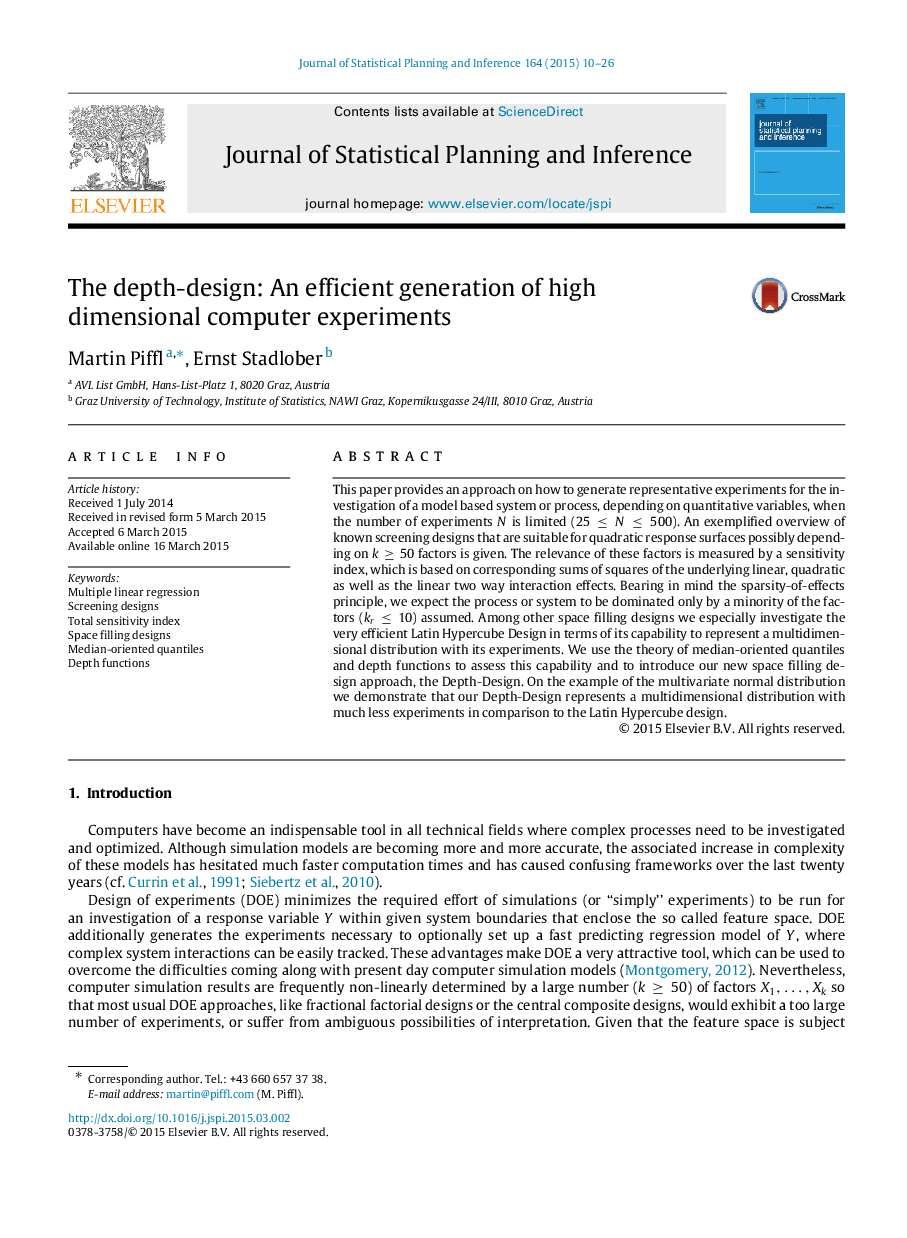| Article ID | Journal | Published Year | Pages | File Type |
|---|---|---|---|---|
| 1147971 | Journal of Statistical Planning and Inference | 2015 | 17 Pages |
•Representative experiments for high dimensional distributions are generated.•A methodology to evaluate the Definitive Screening Design is given.•Median-oriented quantiles are consulted to measure the representativeness of the experiments.•The Latin Hypercube Design is investigated in terms of median-oriented quantiles.•The very efficient Depth Design is introduced and compared to the Latin Hypercube Design.
This paper provides an approach on how to generate representative experiments for the investigation of a model based system or process, depending on quantitative variables, when the number of experiments NN is limited (25≤N≤50025≤N≤500). An exemplified overview of known screening designs that are suitable for quadratic response surfaces possibly depending on k≥50k≥50 factors is given. The relevance of these factors is measured by a sensitivity index, which is based on corresponding sums of squares of the underlying linear, quadratic as well as the linear two way interaction effects. Bearing in mind the sparsity-of-effects principle, we expect the process or system to be dominated only by a minority of the factors (kr≤10kr≤10) assumed. Among other space filling designs we especially investigate the very efficient Latin Hypercube Design in terms of its capability to represent a multidimensional distribution with its experiments. We use the theory of median-oriented quantiles and depth functions to assess this capability and to introduce our new space filling design approach, the Depth-Design. On the example of the multivariate normal distribution we demonstrate that our Depth-Design represents a multidimensional distribution with much less experiments in comparison to the Latin Hypercube design.
